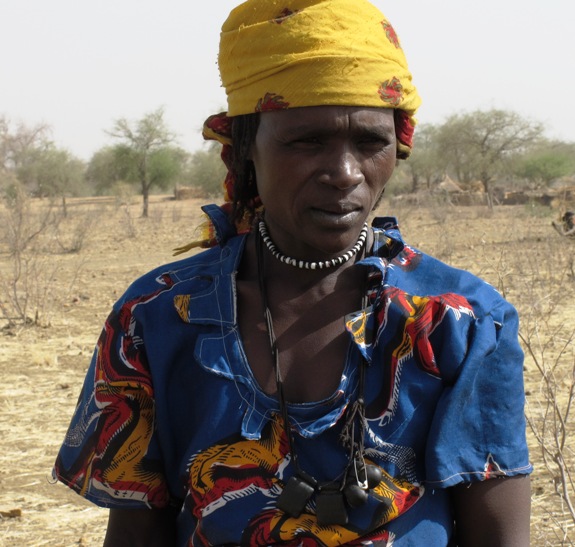Almost 10 million people across West Africa are facing a food crisis following erratic rains that have caused poor food harvests and water shortages. In Chad, harvests have fallen by 34% with some 2 million people now threatened with food shortage. Oxfam is working in some of the worst affected countries such as Chad, Niger and Mali. This is the first in aseries of blogs.
Hungy levels reach new low in Chad
In Djaya, 50 kilometers from Bitkine (Guéra region), one might be surprised to see more than 20 women digging the ground at the village entrance. Everyone calls them the "termitières" because they are experts at finding the anthills that have the most seeds in the area. That's right, women are digging the ground to find seeds, to find food, to find anything to feed themselves and families.
At seven in the morning, women line up to start searching the fields around Djaya - equipped at best with a small shovel. Old and young, pregnant or with children, no one is spared. They all have the same goal: find the anthill that contains the most seeds and grains.
It costs Sedoisa, 71 year old, a lot of energy to bend down and dig the ground. Her wrinkled hands attest of a long life spent working in the field. Those were other times. Now words are not enough and with a simple gesture of her hand she expresses that she has nothing to bring to her mouth.When there is nothing left to eat and there is nothing left to do, extreme measures must be taken to survive.  Sedoisa, 71.
Sedoisa, 71.
Until the sun goes down, the "termitières" search incessantly for the anthill where the queen dwells. It is the precious one. It is worthwhile because inside it there are the seeds and grains that the worker ants have brought to the queen, food that the wind has scattered from the storehouse or from the fields nearby. Then, they destroy it and rummage around in order to gather all these little remains that will serve them later as a meal.
They need to hurry up and gather all they can find before the rainy season arrives in June - then, the waters destroy the anthills and it is no longer possible to find anything.
They can search in three or four different places before they actually find the one that has the food. Amne comments that this year they have started searching earlier and that on good days they might find about 1 koro (2.5 kg) worth of grain.
But each time the number of women looking for food increases and she complains: "Soon the day will come when there will no longer be enough anthills for everyone."
 Amne.
Amne.
The harvest for 2009-10 has been the worst in the past five years. Not only was there very little rainfall and very little crop, the locust attacks have seriously damaged the fruit trees that, until now, have been the main source of income to overcome the crisis in rural areas.
by Cristina Vázquez Moreno of Intermon Oxfam